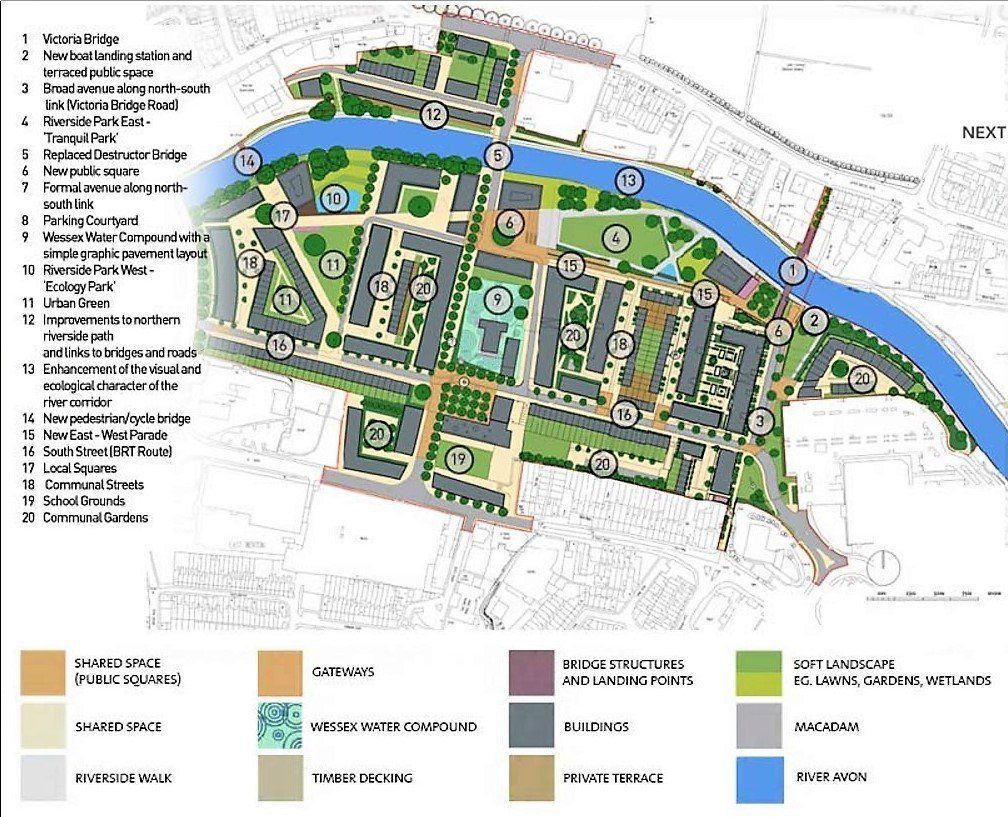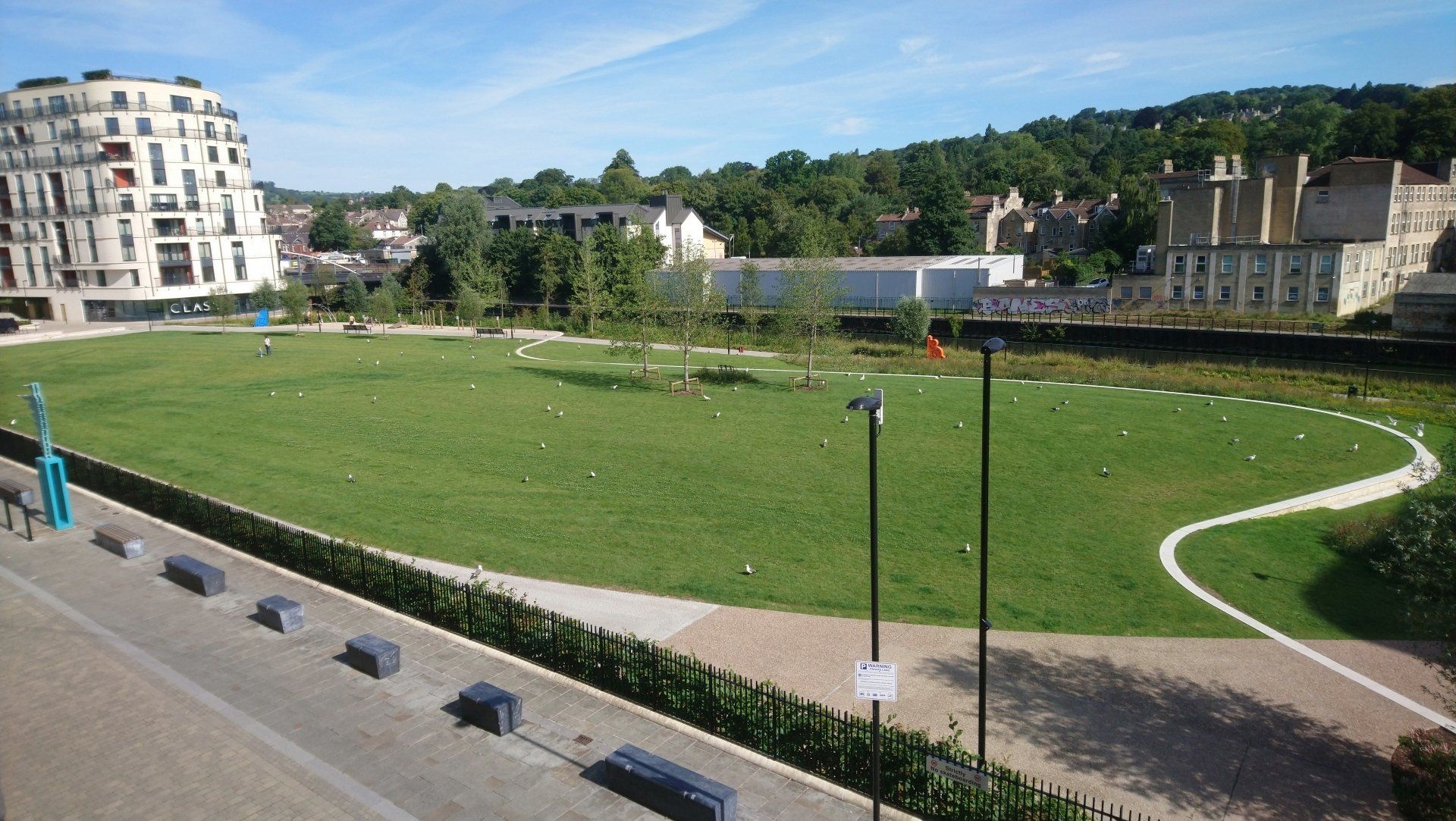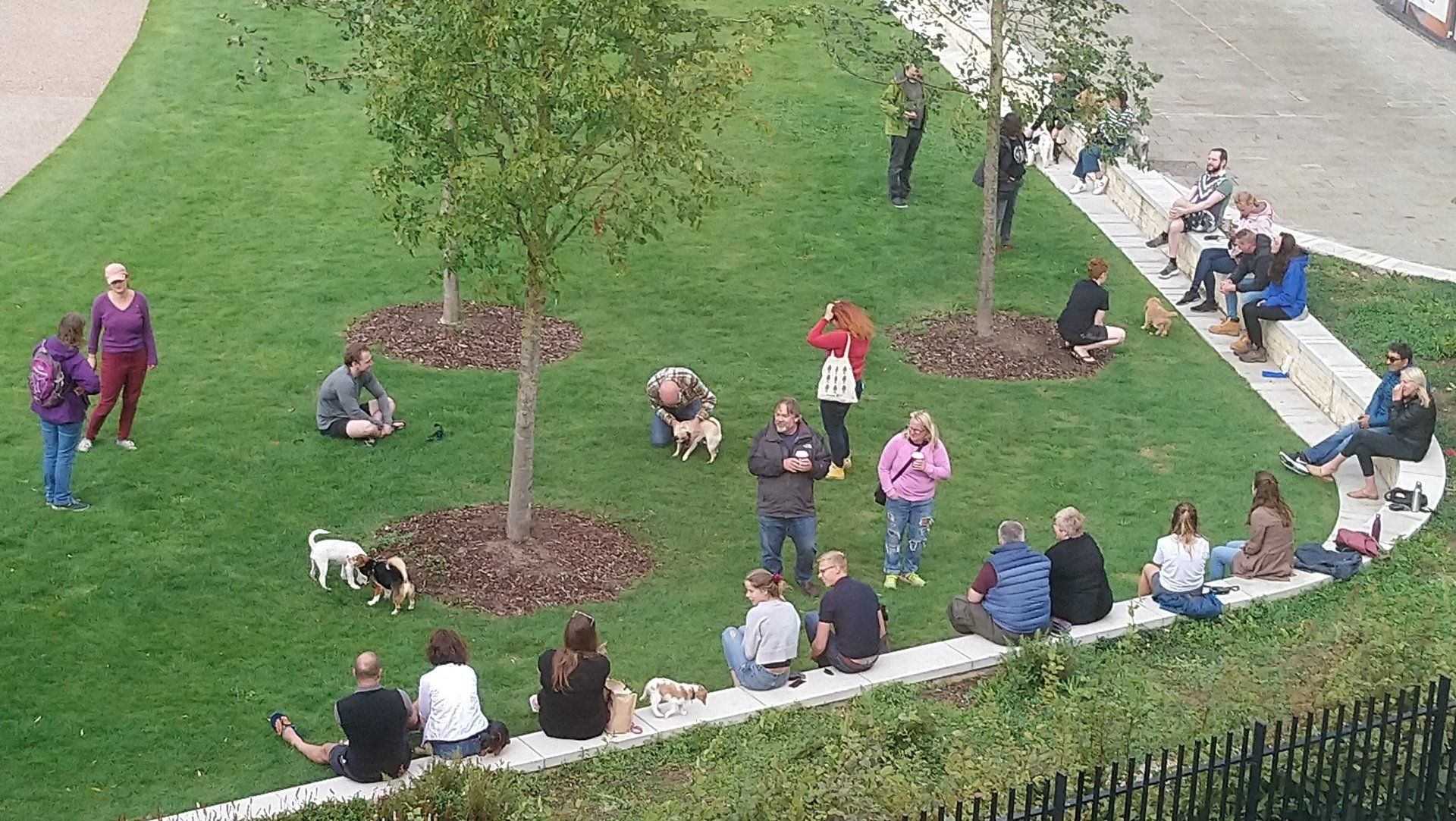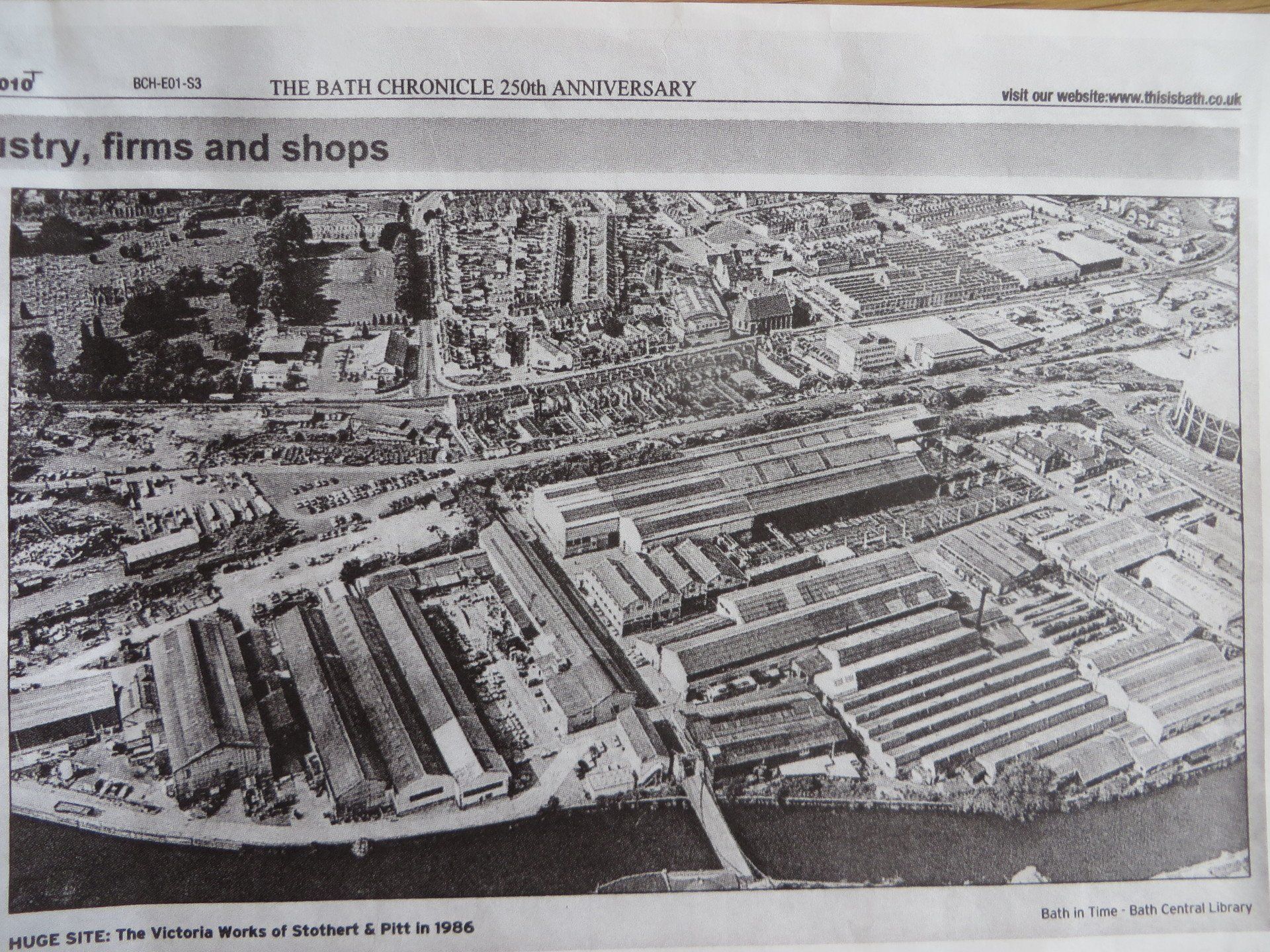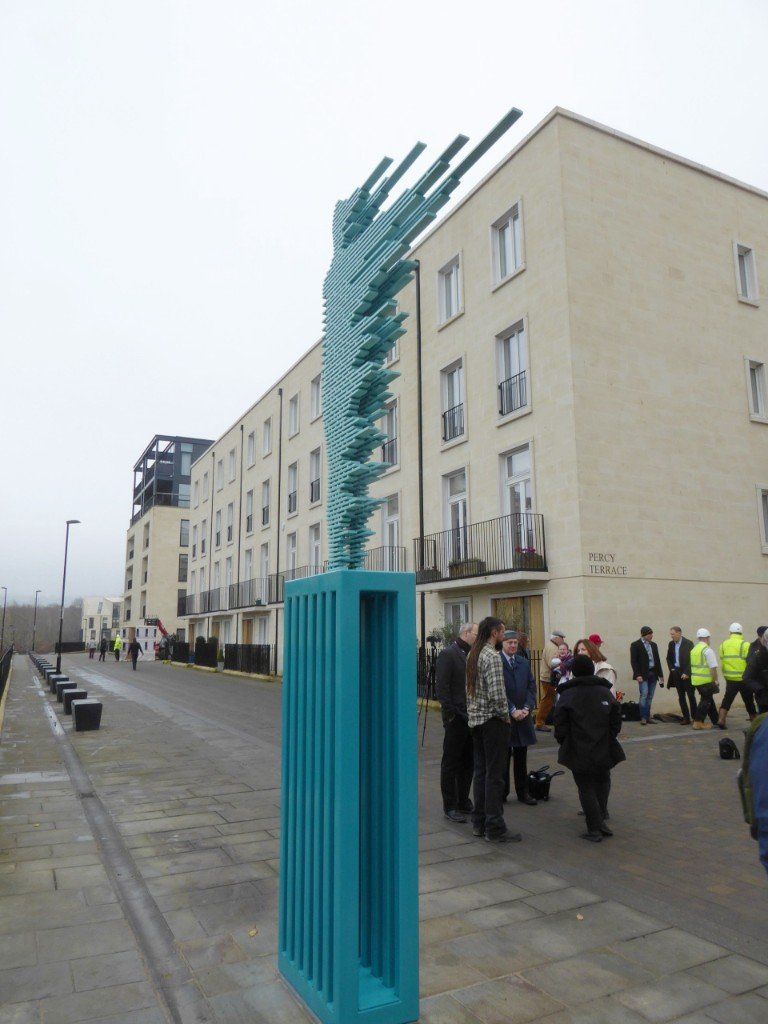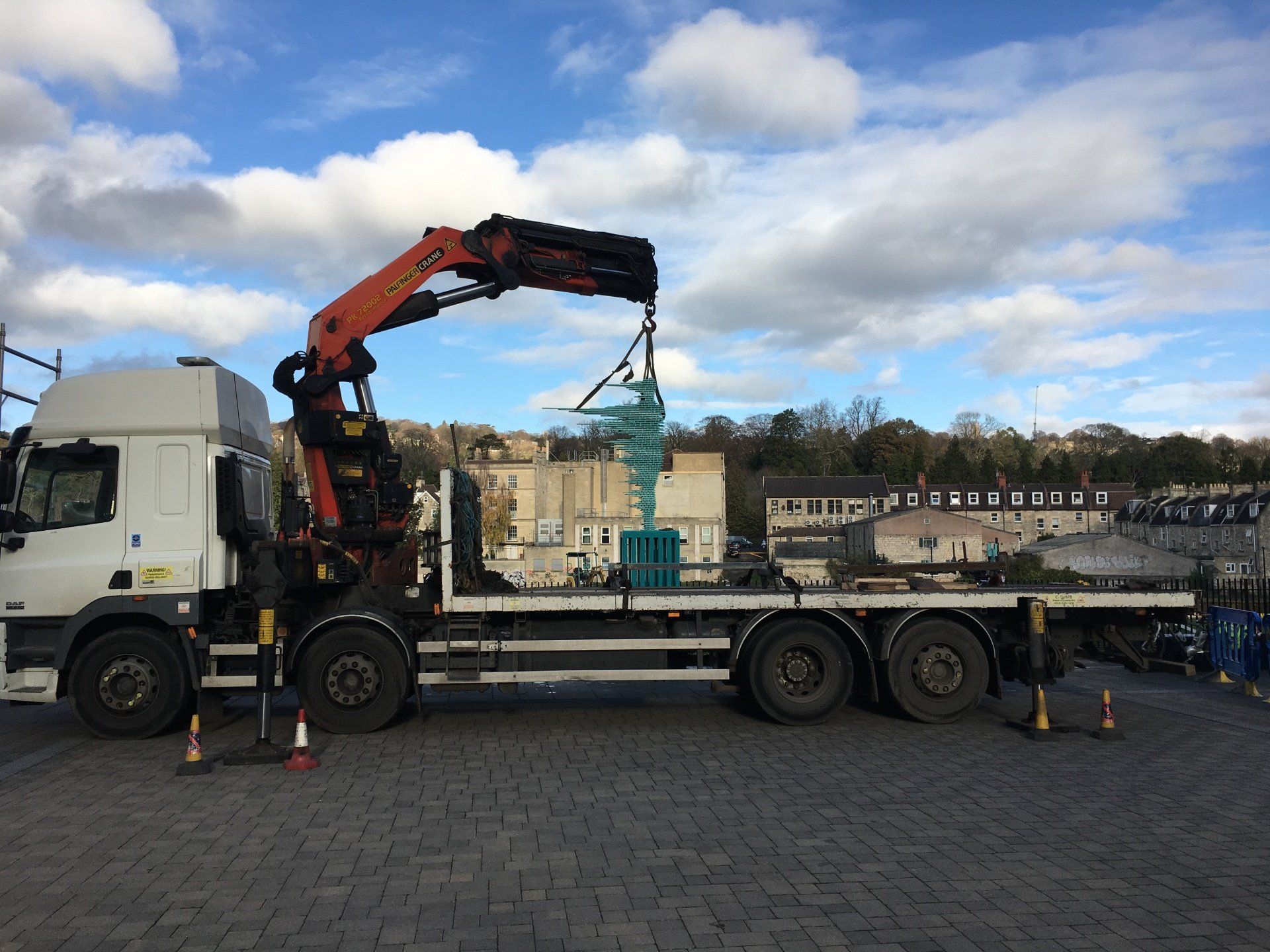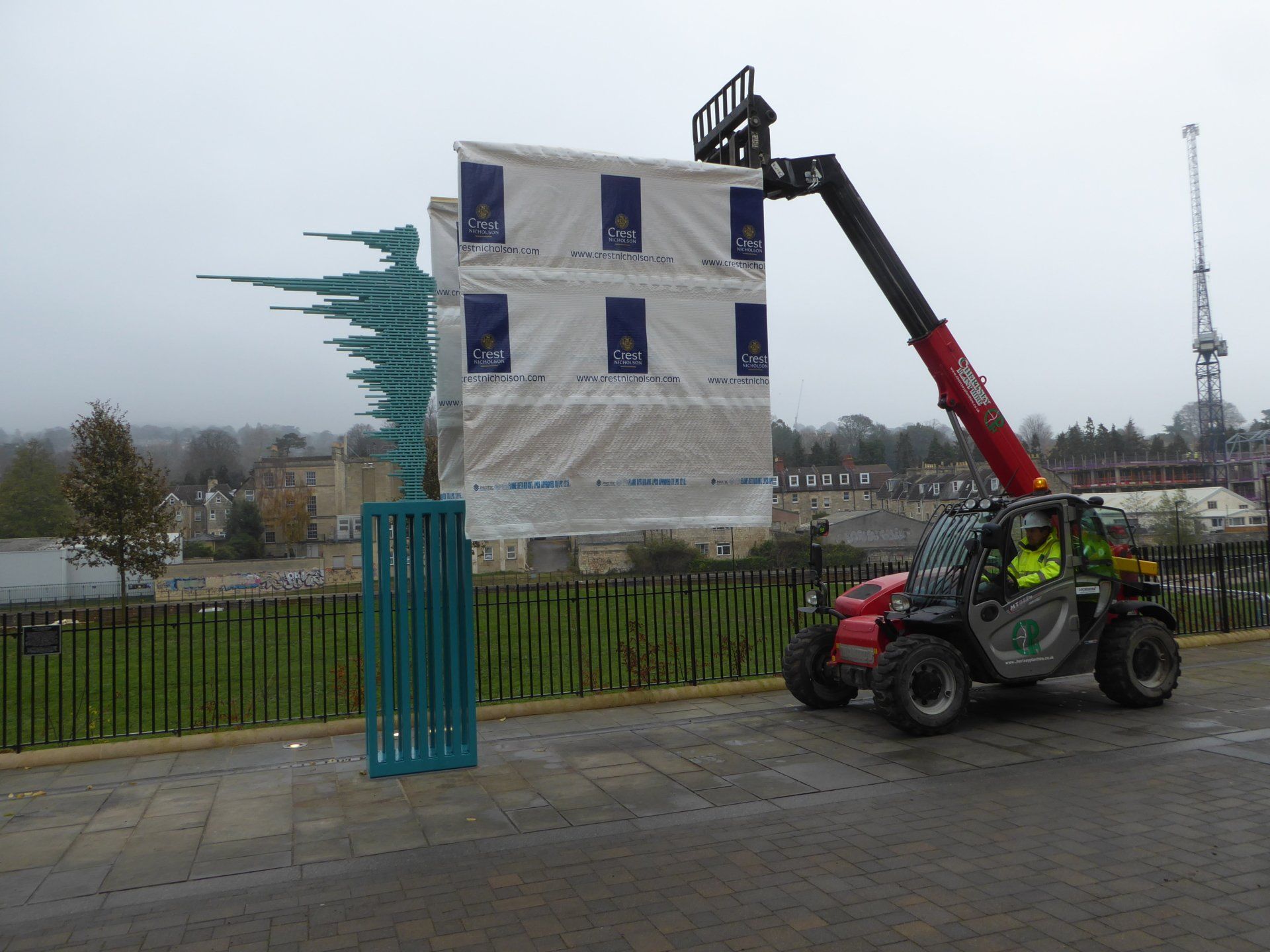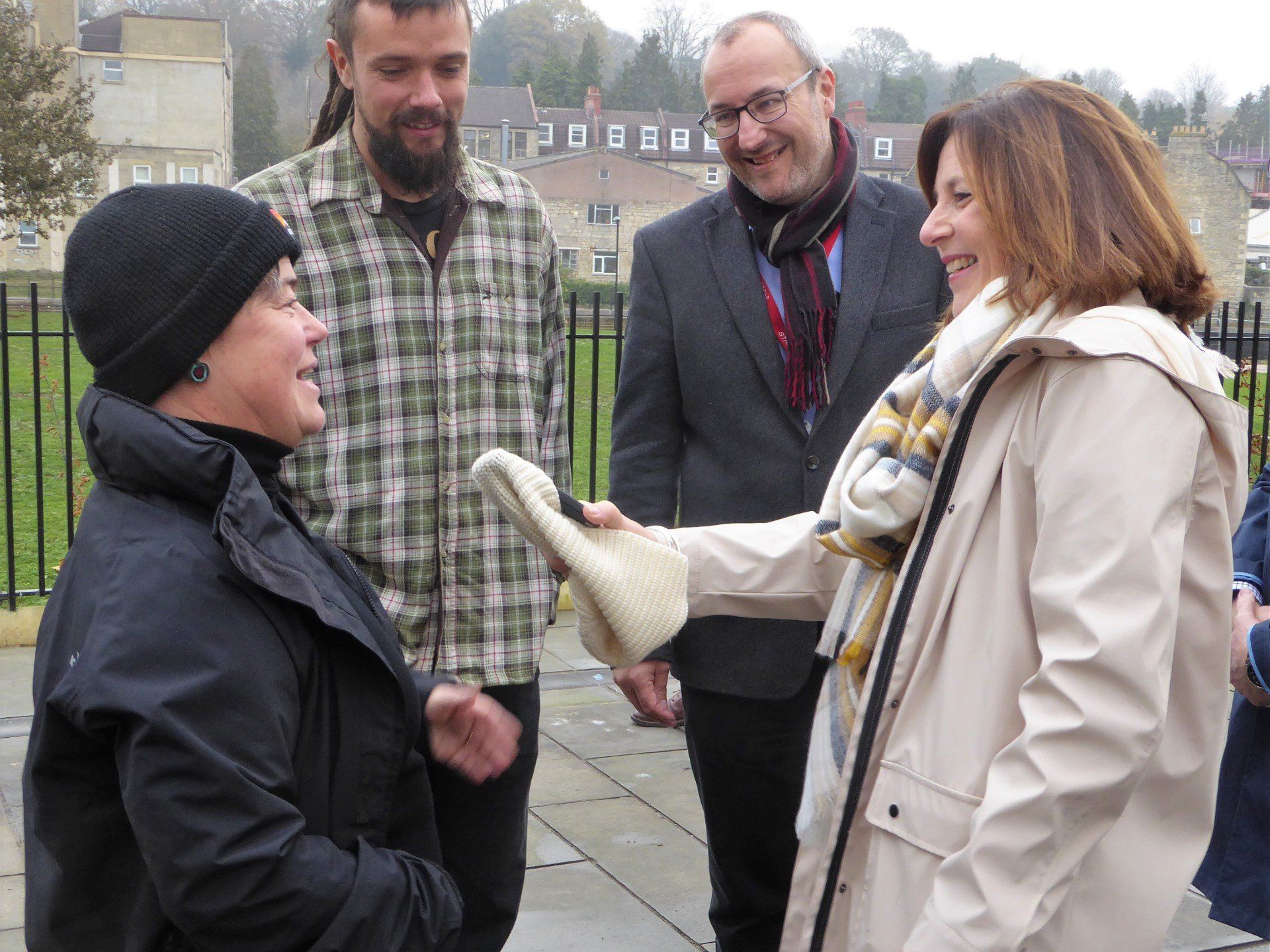The serenely lovely Maid of the Bridge was unveiled on 23rd November 2018. Standing as she does at the intersection of Percy Terrace and Elizabeth Parade in Bath Riverside, the Maid is visible from many perspectives as she overlooks Elizabeth Park in a gesture that suggests she is bidding the River Avon to flow onwards towards the sea.
Riverside’s new and very welcome visitor is the creation of local artist Anna Gillespie, with Bath engineers Buro Happold advising on structural detail and the finished work being fabricated by IronArt of Bath. The metal for the installation comes from strips that were left over following the refurbishment of Victoria Bridge, hence the work’s title. 2500 bolts were used to bolt the creation together.
The statue will be illuminated at night so that it is visible from the towpath on the north side of the River. The maid plays a prominent role in Crest Nicholson’s art policy for the Riverside development, overseen by artist Peter Dickinson.
Photos show the Maid's arrival and installation on 21st Nov (artist Anna sitting at right side) the official unveiling, and Anna Gillespie and the IronArt and Buro Happold players being interviewed by the BBC's Ali Vowles.(click to enlarge)

